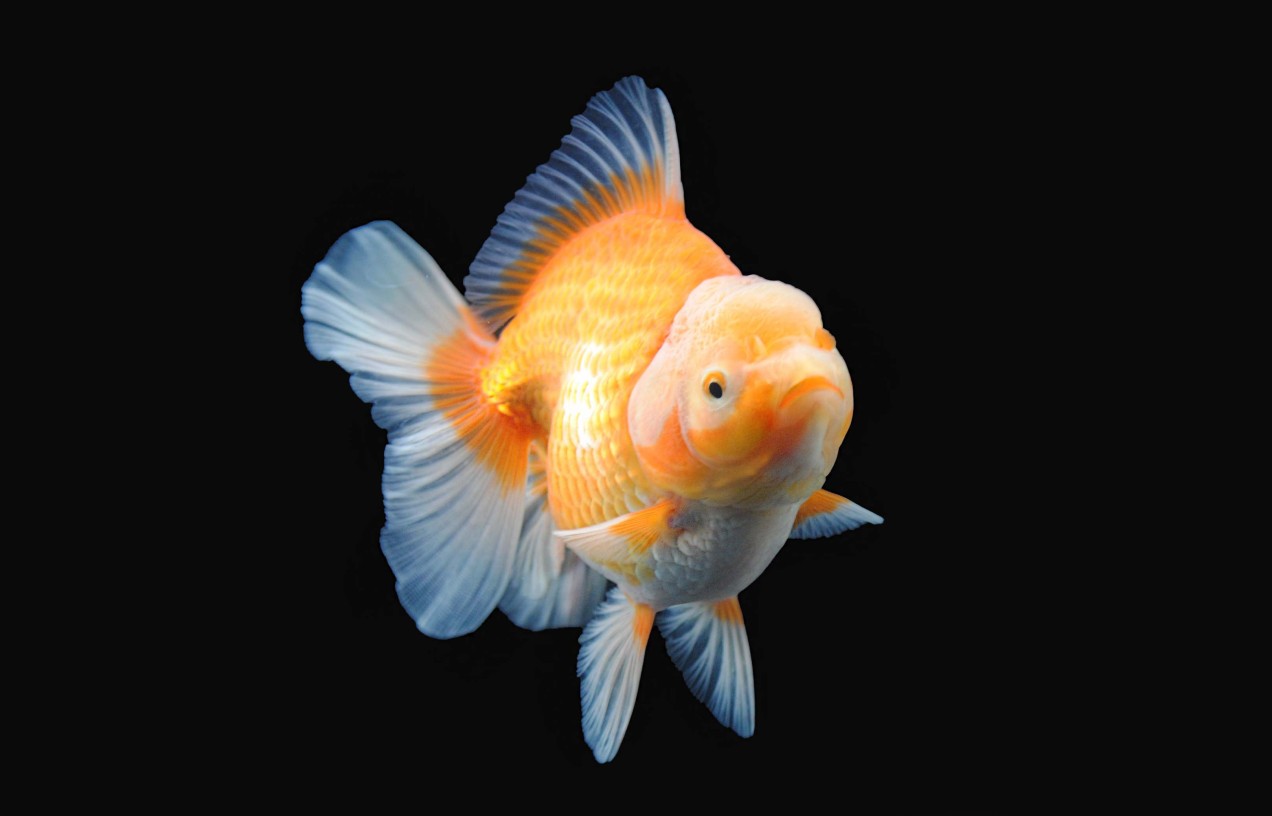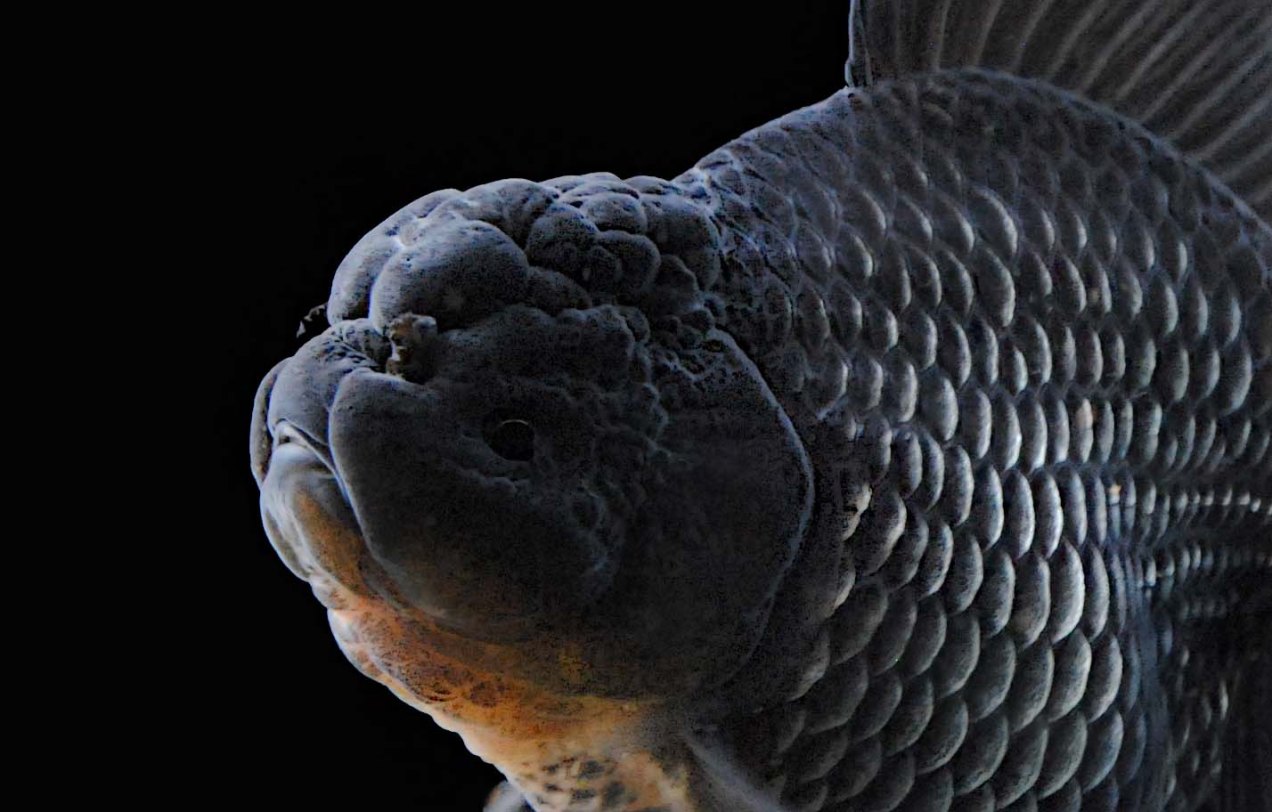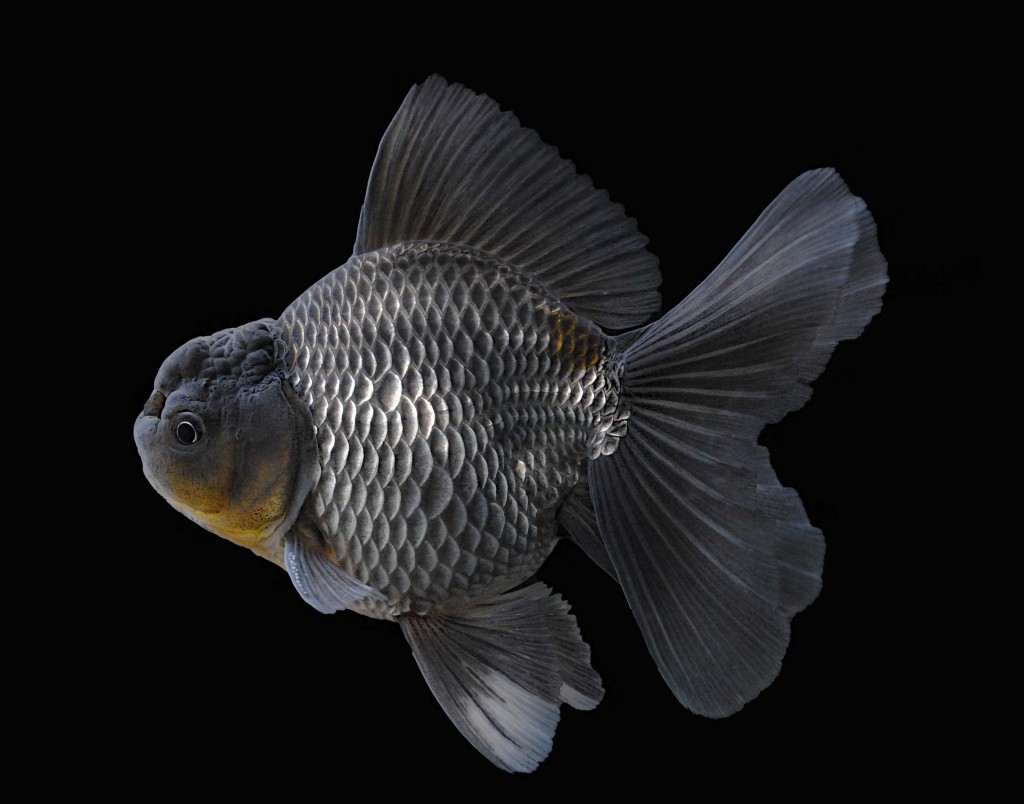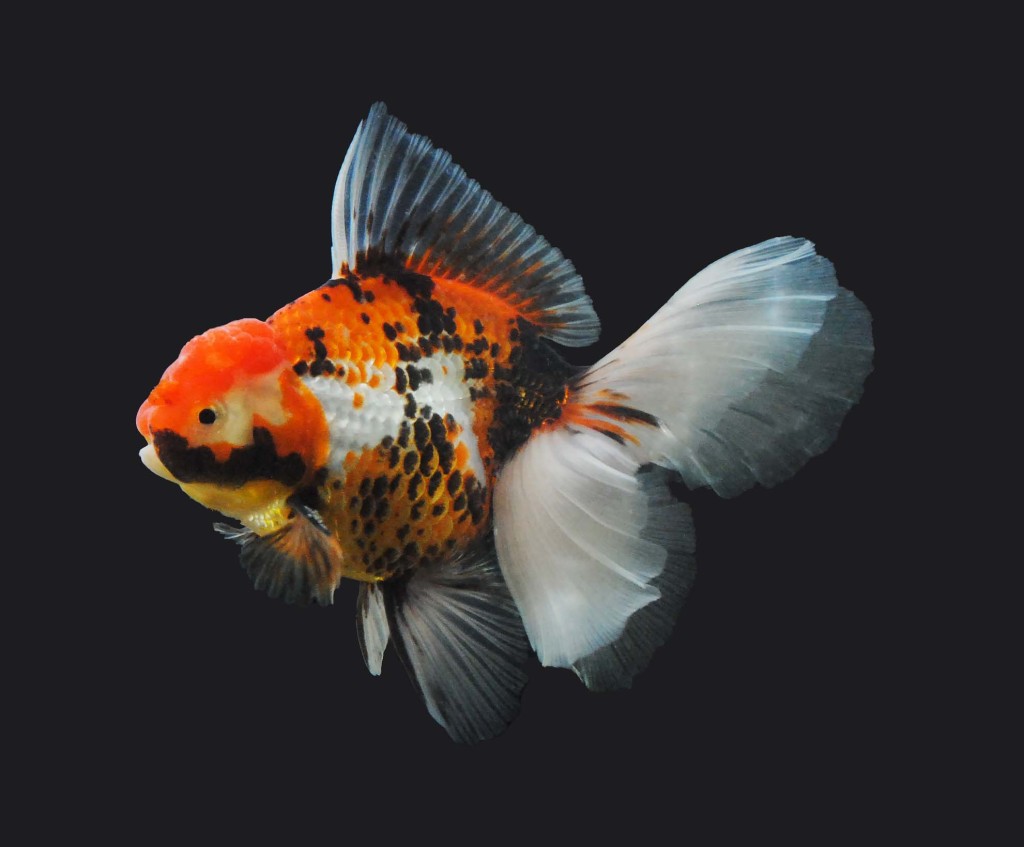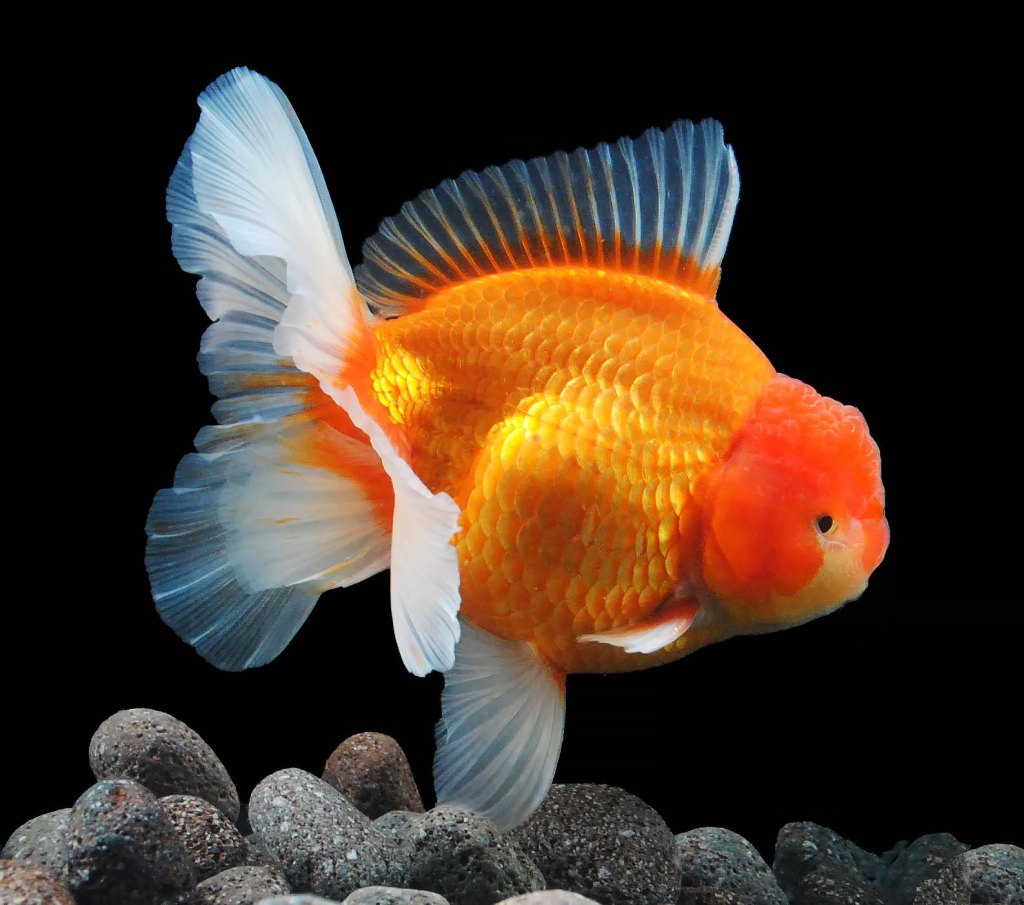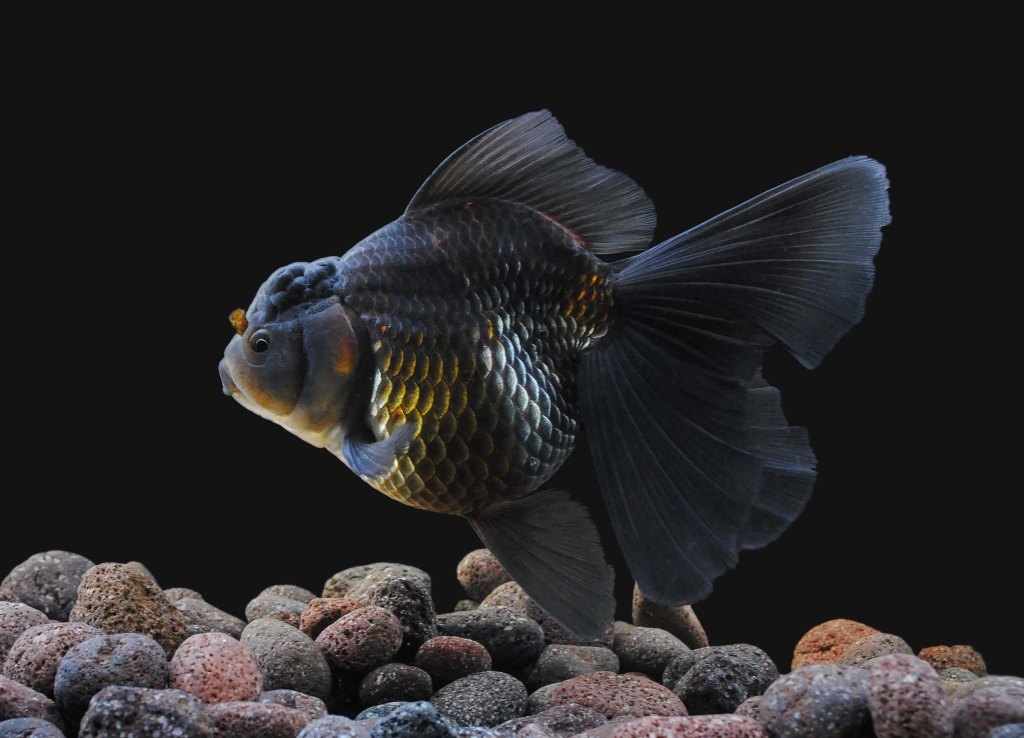Date: 24 Feb 2021
Out of the four projects to establish my line of blue, brown, purple, and yellow oranda, three are already on the way since January. Each project presents its own difficulty.
Blue Oranda
My previous line of blue oranda was not bad, though they have not acquired the Basic Material’s body form. But the quality was declining at the end of last year. Somehow, my latest offspring regained the old version of blue oranda form with its long and slim body shape. Well, it is not bad. Just that it goes out of my plan. I decided to let most of them go. I was surprised to find myself with only single blue oranda left in my pond. I think I took a great risk in selling them. If something bad happen to this last Mohican, I will lose my line.
It is a great relief when this blue female oranda laid eggs this January. I quickly paired her with my male Basic Material. I collected the second batch of the eggs and not the first batch since I believe the first batch is usually weak. I will not expect the blue oranda directly from this cross. The blue oranda will appear in the F2. So far, the offspring has a good body shape and erect tail. But it is too early to judge them. In my calculation, this F1 (and also F2) will not have the complete Basic Material body form yet. Their shape will be transitional. I will need to mate the F2 with the Basic Material form again (probably the offspring of the current Basic Material) to have my objective realized in the F4. The plan is so straight forward. If everything is on course, then this project will be successful in two years (assuming that each step needs 6 months for the fish to mature and ready to mate).
At least, the first step has been done, and is on the right track. What can go wrong is if all the offspring die, or all of them turn out to be of the same sex. That is why I think the wise course is to keep the female blue oranda with me till the production of F2.
Brown Oranda
This project is behind the schedule.
I kept a pair of brown oranda from my previous line. In January, I mated my female brown oranda with the male Basic Material. Yet the result was weak. In my analysis, the bad result was due to the female brown oranda getting old. So, I got rid of the offspring and executed plan B. Actually, I had the option to cross the male brown oranda with the female Basic Material. Unfortunately, the female Basic Material was unproductive at that time. Glad that I had plan B.
My plan B depends on the offspring from the previous brown oranda. Somehow, I managed to breed the pair before they became weak, and I raised six youngsters. Six was more than enough, I thought. Right now, they are three months old, not ready to breed yet. So, I need to postpone this brown oranda project perhaps for three more months until the young brown oranda mature. Sounds like a good plan, isn’t it? Too bad, two of them died last week due to disease, and three more died this morning. I am left with one youngster, which is still in medication right now. I do not know whether it will survive or not. And I have not checked its gender yet. Hopefully, this last fish will survive and I can run the plan B three months from now. But I must admit, this plan B is not safe right now.
What happens if plan B fail, that is, if the last fish dies also? I have plan C.
Last year, I did not make a clear plan for my breeding project yet. So, I bred whatever project that came to my mind. One of them was making a brown oranda with large headgrowth without bothering about the body shape. So, I crossed the brown oranda with my tricolor goosehead. The offspring have red white and grey coloration, and is now five months old, almost ready to breed. When I decided to establish my line using the Basic Material body form, I thought about getting rid of this brown goosehead project, since I did not want to have too many overlapping projects. Glad I have not done that. So, if plan B fails, I still have this plan C. If I need to execute this back up plan, then this project will take six to nine months longer. It will take two and a half or even three years to complete.
Purple Oranda
Things get a bit messy here. Before this project to establish my purple oranda line, I already started several projects. First, I already bred my original line and now I have six young purple oranda about three months old (the same age as my young brown oranda). Second, I already mated my original purple oranda with my tricolor goosehead oranda to create purple oranda with large headgrowth. Right now, the F1 is already five months old and ready to spawn. Third, I already crossed my original purple oranda with the Basic Material body shape (I use the parent of my current basic Material in the cross) and the F1 is seven months old. So, with these stocks, I can have plan A to C in readiness. But it is hard work to maintain all of them.
From these collections, which one should I use as my plan A?
Of course, the most logical thing is to use the third project. I already have the F1. I will just need to breed the F2 and it will yield purple oranda with transitional body form. Then I will continue with crossing the F2 and the Basic Material again, and will achieve my goal in the F4. This will make the project be finish in one and a half year! Sounds great!. And that was what I did. I mated F1 x F1 in January and came up with the F2. But I anticipate two problems.
I only have one female in the F1, and she has a defect in her tail. The tail is folded. And I am worried that this trait might be carried forward to the offspring. So far, the offspring (F2) looks fine. But it does not mean that they will be free from defect, since folded tail might occur later. Hopefully the result will be mixed, so I can select the non-defect one to use. If all of them are defect, then I have some options. I might still mate them with the Basic Material line in the hope that the gene from the Basic Material will correct the defect. Or I can start over using the original line, mating them with the Basic Material (basically, this means I redo what I have been doing half a year earlier) with the consequence of taking a longer time for this project to accomplish. I do not know which one is a better strategy yet. I think for now I will just observe, and decide later according to the situation.
The second problem has happened. Some of the F2 are losing its purple color and are turning into white! This is bad. How can this happen? In my analysis, it is because I use red-white Basic Material fish in the previous cross. The purple color is basically a variant of black pigmentation. It will be stronger if I use black fish in the cross instead of red-white fish (let alone a dominantly white one). Actually, there were some grey fish in the F1, but I got rid of them, thinking that the colored one (red-white one) is better. Now I realize my mistake. The grey one might yield a more long-lasting purple color (this is still my guess). Yet, this is already happening. I have the option to continue with this F2, hopefully selecting the strong purple color if possible; or I can introduce black oranda to the project. But the introduction of black fish will complicate the project, since the black fish is not the Basic Material.
Well, so far, I need to observe how the F2 turns out. Will they have folded tail? Will they become all white? And I will think of solution later on after the observation.
Yellow Oranda
About seven months ago I crossed my original yellow oranda with the parent of the Basic Material. I kept two females from the offspring (F1). The first one is free from defect and is my first choice to breed. The second one develops a folded tail. As weird as it may seems, my first choice does not lay eggs up to now. The productive one is one with defect. I have no choice but to breed the defect one (F1 x F1). Unfortunately, more than 90 percent are single tail! I do not know why. But my guess this has something to do with the original yellow goldfish that I use (yellow comets – single tail). So, I discarded this batch. Now I am waiting for the first choice to lay eggs. Meanwhile, I run the back-up plan.
The key to my back up plan is my original female yellow goldfish (actually, she is yellow-white, very interesting color). She is very productive. I have several options:
- I can breed her with another original yellow goldfish
- I can mate her with the existing F1 (which already contain part of the Basic Material genetics)
- I can cross her with the Basic Material
Which strategy is the best? Option 1 is to retain the original yellow goldfish in case something happens and I need to start from scratch. Option 2 has the same purpose but with a better body shape (since the result will have 25% of the Basic Material genetics). So, by this logic, option 1 can be discarded. Option 2 is even better than the option 3 in terms of the lesser time to complete the whole project. It seems that option 3 can be discarded also. But there is one possible problem to worry about. How if option 2 results in many single tail goldfish? If that happens, then option 2 cannot be used. But at this state, I do not know what will happen. So, I just do both option 2 and 3 simultaneously. And I have done them last week, with good egg hatches. So, now there are two sub-projects going on in this yellow oranda project, while waiting for the F1 x F1 to happen.
To complicate the matter, I also have another side project, which is the yellow sakura project. My aim here is to create transparent scale oranda with yellow and white color. I do not know how they will look like. I am not sure if this can be achieved as I expected. But it is nice to try. I have started this project about six months ago and already have the F1. The appearance of the F1 is just a red-white sakura with a few black stains. But the genetics is half yellow. I already breed this F1 x F1 and has one yellow white transparent color oranda (with a few black stains). It is very young, still less than two months old, but it already looks yellowish-white. I need more time to confirm the color. Apart from this F1 x F1, I also mate the original female yellow in the option 2 and 3 with this male F1! I am hoping to get some more yellow sakura with less black stains. But this project does not incorporate the Basic Material’s body shape. So, this will be a side- project. I do not know if I am too greedy or if I can be justified doing this. But this certainly complicate my yellow oranda project – an interesting complication.






